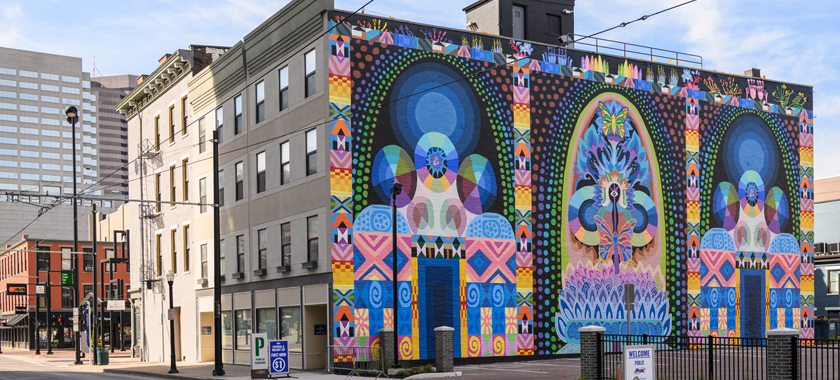
Wondering How to Break Into the World of Public Art? We’ve Got Answers.
Gain insights from an artist who’s been there, and from Program Managers who put art into NYC public spaces.
How can you break into the realm of public art? How does one go from producing traditional art objects or performances to presenting your work in the public realm?
If you find yourself asking these questions, we’re here to share answers from Marissa Lazar, Public Art Project Manager, DOT Public Art Program; Kendal Henry, Assistant Commissioner of Public Art, New York City Department of Cultural Affairs (DCLA) (which manages the Percent for Art program); and Saya Woolfalk, NYSCA/NYFA Artist Fellow and Public Artist. NYFA Learning’s Kelly Olshan gathered Lazar, Henry, and Woolfalk together to discuss how to get started, the technical skill sets required to execute these types of projects (insurance, fabrication, etc), as well as what goes on behind the scenes of public art panels.
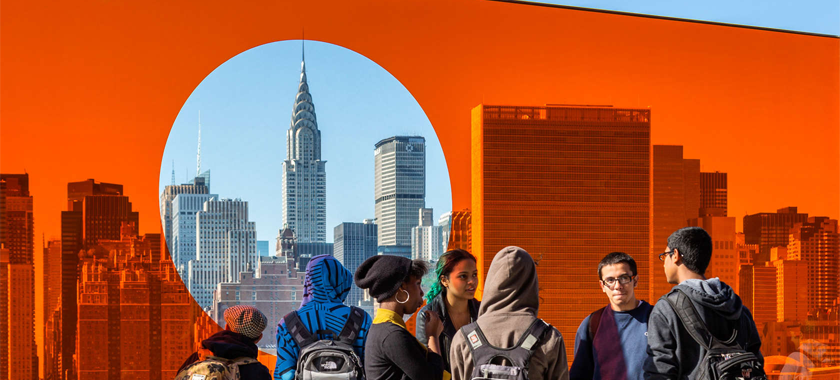
The Artist’s Perspective
Though Woolfalk graduated with her MFA degree and started applying for public art projects in 2004, it wasn’t until 2017 that her first public art project was exhibited. Since 2017, Woolfalk has done lots of different types of projects—from permanent projects, temporary projects, projects inside of museums—and her main takeaway for artists is that it took her a “long time to figure it out.”
Part of her journey was learning how to present: “I did this so many times. The first time I did it, I had no idea what I was doing.” She went on to say that she became obsessed with the fear that she could be incapable of accomplishing the project, which led to an underwhelming presentation.
Woolfalk gave an example of someone who ultimately won a $500,000 commission who presented an amalgamation of cardboard cutouts. The emphasis was not on presenting polished work, but on delivering an exciting presentation that considered the community and the impact that the work might have on the people who live at the site. “The excitement that people feel about the artistic potential of the rendering is really important when you’re doing the presentations,” she says.
The excitement that people feel about the artistic potential of the rendering is really important when you’re doing the presentations.
-Saya Woolfalk
Henry, who underscored this point by urging artists to think about how they are referring back to the space, to the audience, and how they’re thinking about the history, geographic location, or cultural makeup of the people around it.
”What’s super important: what we are looking for is that passion, that desire, that excitement…really try to understand what your concept is,” he says. “Do what it is that you do to get your visual point across. We’re looking for concept.” He said to rely less on materials, and think about what it is that you want to do in that space and let them (Percent for Art) worry about how to execute it. A strong concept can be realized in many different ways.
Woolfalk started doing public art by applying to requests for proposals, acknowledging that though she was not successful for years, she learned over time to hone her proposal-making process. She got herself on registries, which eventually helped her get requests for proposals that were directed specifically to her.
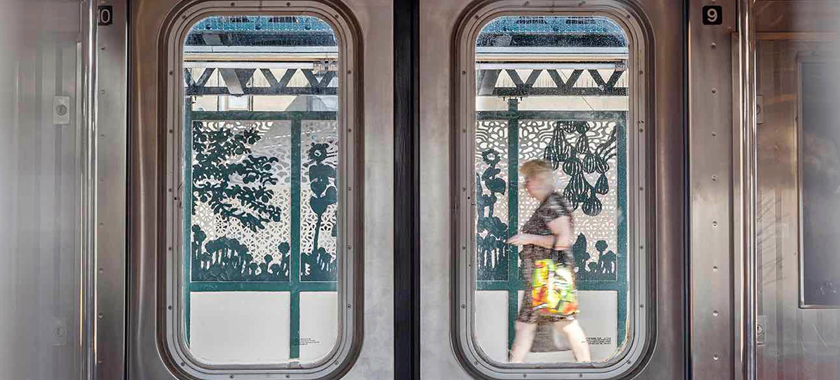
From there, she was given a chance to propose projects three different times for the MTA, three different times for the School Construction Authority (through Percent for Art). She didn’t get either her first two tries, but persisted, learning that her material choices that she was making and the things that she was proposing “did not have to be within my wheelhouse as an artist,” as she could hire fabricators to realize that which she couldn’t make herself. These projects helped open the door for other more permanent public art works.
She also stressed to artists that they make and find their own opportunities. “I keep going back to this,” she says. “I made up a project, and asked some people if they wanted to work on it, and they said yes, and found money to do the project, and did fundraising and outreach to make the project happen.”
Woolfalk provided this example to illustrate: a former Workspace Resident at LMCC, she was given the opportunity to participate in the organization’s annual River to River Festival. She suggested making the project bigger in collaboration with the business improvement district (BID) Times Square Alliance, as she had a contact there via Elizabeth Foundation for the Arts, where she had a studio space. The Alliance hosted her artwork on the electronic billboards in Times Square, and the River to River Festival had a live site activation of a performance project at the Fulton Transit Station. They activated the LED screens in that site as well.
“There are other people whose careers are built in a different way, but my career has really been built by making stuff up. And then, hoping that someone will work with me,” says Woolfalk.
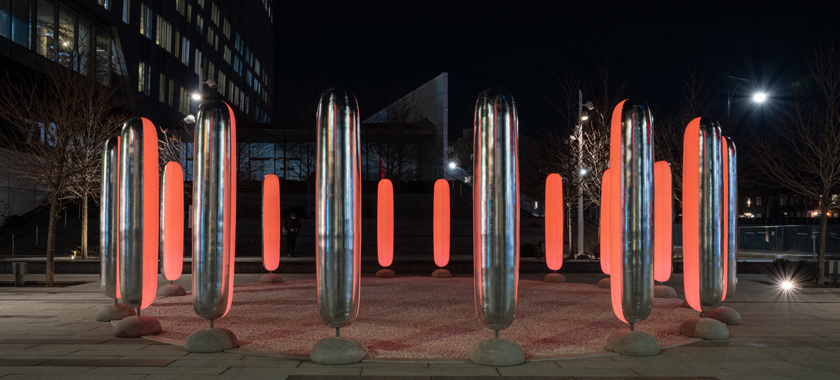
The Program Manager’s Perspectives
Through the DOT Public Art Program, Lazar manages all temporary public art on NYC DOT property. For artists hoping to break into the world of public art, she acknowledges that “In the beginning, there could be a lot of trial and error, of putting yourself out there to see what can happen. I think it is important to apply to all the opportunities you can, you should never feel intimidated by this process. Trust yourself because getting your name out there is really important.”
In the beginning, there could be a lot of trial and error, of putting yourself out there to see what can happen. I think it is important to apply to all the opportunities you can, you should never feel intimidated by this process.
-Marissa Lazar
Lazar suggests looking into different city agencies and other organizations that you might be interested in, and then following them on social media and signing up for their newsletters to get looped into opportunities when they are announced.
She notes that the Barrier Beautification program is a good example of an entry-level way for artists to get involved with DOT’s Public Art Program. “It is not easy by any means, but it does help artists and designers enter the field of public art where the sites are unique but the scale is manageable (long, but small-scale murals). If you don’t get selected the first time, keep trying,” she says.
Speaking from the perspective of NYC Percent for Art, where New York City’s Department of Cultural Affairs commissions permanent public art, Henry notes that ”One of the things that we’ve noticed in having discussions with artists is that the process could seem super intimidating. Artists often say things like ‘I have not done public art before, I barely know what it is, I barely understand it, How am I going to work with these budgets, I don’t do that regularly.’ At Percent for Art, we take on a lot of those roles for artists and really guide them through the process, throughout the entire thing.”
He went on to say that 85-90% of artists they work with have never done public art before, so they created the program to accommodate that as much as possible.
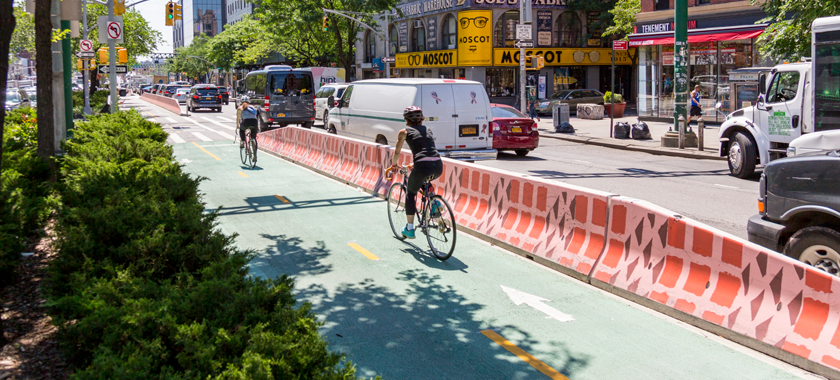
Opportunities for Performing Artists
For performance artists, Lazar encourages folks to work with local community groups because some have their own public spaces or yards which offer a really great way to engage with the public but on private property, as a “stepping stone” to other public art works.
While DOT Public Art Program’s day-to-day is visual arts-focused, the agency has a few signature agency events like Summer Streets and Car-Free Earth Day where there is a little more freedom to work with performance artists. Lazar suggests looking into these sorts of events as potential opportunities.
While Henry acknowledges the field of public art has traditionally been seen as visual arts-focused, he sees this as unnecessarily narrow, and changing. He has also noticed the desire for individual artists to collaborate with each other, and usually with artists working in different media and fields. “New interesting works are being created as a result of even permanent works,” he says, highlighting that he is seeing more opportunities for artists to interact with a space in a performative and temporary way.
Woolfalk has brought performance artists into the fold in her work as a way to further engage audiences and bring new conversations to the artwork. A River to River Festival project she did in collaboration with dancer and anthropologist Aimee Meredith Cox led to further collaborations. When Woolfalk was offered a solo museum show at Contemporary Arts Center, Cincinnati, she partnered with Cox on a public mural (funded by ArtWorks Cincinnati, pictured at top) outside the Center’s parking lot and a dance activation in front of the mural.
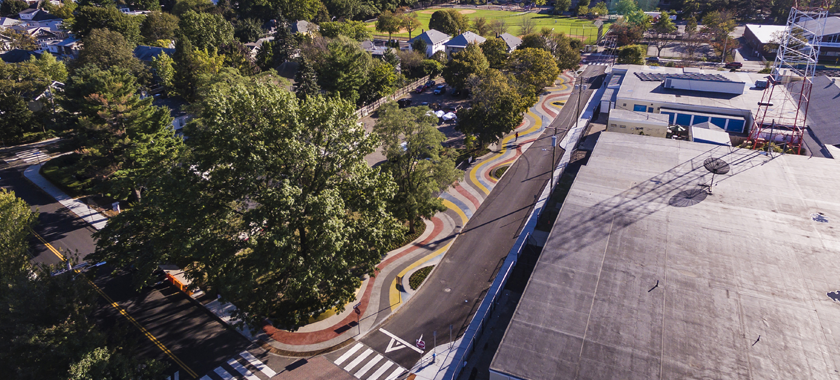
The Application and Review Process
Percent for Art does open calls, but also curates and looks around for art in any and all spaces. “Everybody becomes eligible all of a sudden,” Henry says, noting that they find work in restaurants, on Instagram, via your website, etc.
“When these calls are coming out, whether they are from a municipality or an individual, throw your hat in the ring,” he says. “I always encourage artists to make their proposal for any given project part of their portfolio, because when somebody like myself is looking at your body of work, we see how that body of work is translated into a public art concept and that increases your chances to a group of people who may not be able to make the leap visually from your regular work.”
While Percent for Art is currently updating its registry, Henry suggests that artists reach out by email to get on their radars. Email [email protected]; if you send your portfolio for consideration or an invitation to an upcoming show to this address, it goes to the entire staff.
He stresses that Percent for Art has a number of different ways they select artists. When they reach the panel stage, submissions are reviewed by two types of panelists: the voting panelists and the non-voting (advisory) panelists. The voting panelists include someone from Percent for Art staff, someone from the design agency (that builds things), their sponsoring agency (where work is going in—Police Station, School, etc), and three outside professionals who know something about art.
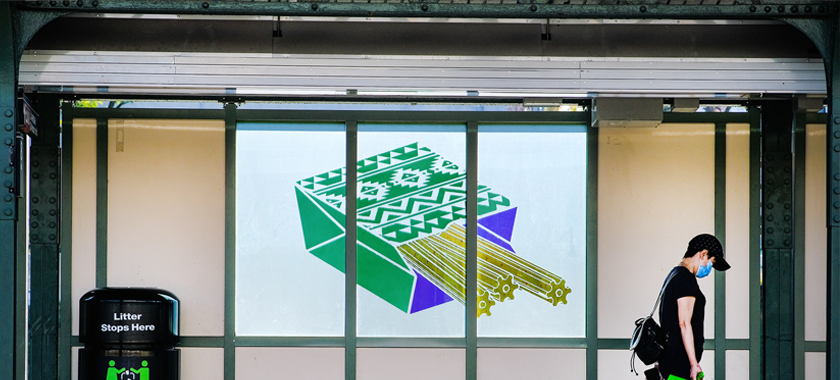
After one panel review, four finalists are selected and given orientation and information about the project. Then they’re given 6-8 weeks to create a conceptual proposal, with regular check-ins with Percent for Art staff to help guide them through the process. In the second panel, the same panelists are there, and each artist has between 15 and 30 minutes to present. The presentation is organized in three parts: the artist 1) reintroduces everyone to who they are through the work that they’ve shared 2) explains how their work relates to the site specific work that they’re creating, and 3) provides a brief overview of the budget. Artists are paid by DCLA for the proposal, and at the end of the meeting panelists vote to select one artist to do the commission.
Conversely, the DOT Public Art Program hosts open calls for about a month (you can find announcements on their website and Instagram). Once closed, the agency collects applications for their Art Advisory Committee to review. “Ultimately, depending on whether it was a ‘Request for Proposals’ or a ‘Request for Qualifications’ once the DOT Advisory Committee reviews applications, the results are either a few artists selected for specific sites or a registry created of top-ranked artists,” says Lazar. “With the artist registry, we pull artists as opportunities become available throughout the year, and interview them.”
When you are selected for a commission, DOT works hand in hand with you throughout the whole process up until installation.
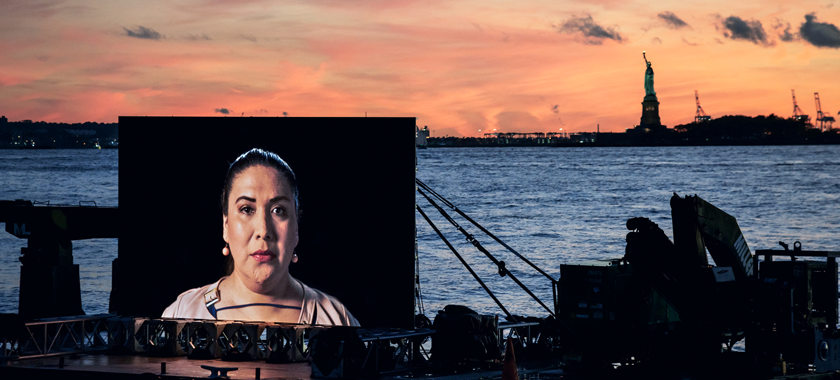
Creating Your Own Opportunities
In addition to seeking formal opportunities, Woolfalk recommends looking for and creating your own opportunities. If you find a site where you think you’d like to create work, investigate who owns the property and try to find if you can get a grant to make a public piece of artwork in that specific place. She also suggests considering whether a local arts organization might help you to support your project. You don’t necessarily have to wait for an open call!
Lazar notes that there are a lot of different types of organizations that work in the public art field. “Almost all DOT art projects are done in partnership with a local, community-based organization, arts organization, or a business improvement district (BID). They’re really helpful with being our eyes and ears on the ground, they help represent the local community and to get the voices of the local community out there. It is all very project dependent,” she says.
These organizations have their own opportunities for art, as well, putting out their own open calls with their own selection process and funding. Sometimes these are privately-funded public-facing sites, called POPs or privately owned public spaces. “You still have to be thinking similarly about making an artwork that is going to be facing the public, but it’s a different means of getting there,” she added.
Says Henry: “When you do it on your own or with a person or group, you’re already building your public art cred, so to speak, for when you are asked to do something more formal.”
Whether you do it on your own or with a person or group, you’re already building your public art cred, so to speak, for when you are asked to do something more formal.
-Kendal Henry
In Conclusion
Just as there is no one way to be an artist, there is no one way to break into the world of public art. As Saya Woolfalk has shown in her own practice, it has taken a lot of work, learning, and perseverance to add public art to her repertoire. But once you get an opportunity, or create your own, it can open doors to others.
Resources from the Panel
DOT Art Website: Provides a breakdown of the DOT Art Program and different initiatives; open calls will be featured on the website as they are released.
Site Selection Guide: outlines transportation infrastructure eligible for public art.
DOT Art Flickr: examples of past artwork permitted through the DOT Art Program.
DCLA Art Services Guide: a list of fabricators, insurers, and other professional services helpful for pulling off public art projects courtesy of the Department of Cultural Affairs’ Percent for Art Program.
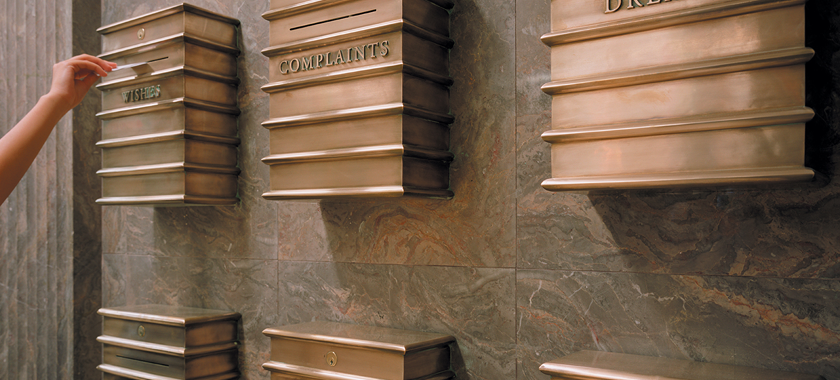
–Compiled by Amy Aronoff, Senior Communications Officer
You can find more articles on arts career topics by visiting the Business of Art section of NYFA’s website. Sign up for NYFA’s bi-weekly newsletter to receive artist resources and upcoming events straight to your inbox.
NYFA Learning provides artists, creators, students, and arts administrators with tools, strategies, and advice for building sustainable careers. We collaborate with organizations, academic institutions, and cultural partners to bring our programs to a broad range of national and international creative communities.